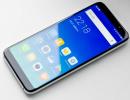How to check battery status on iPhone. How to Determine If Your iPhone or iPad Needs a Battery Replacement Program to Test the Battery on iPhone 5
Hi all! How can you assess the condition of your iPhone battery? Well, if you need more or less accurate data, then you can use it, which shows all the information about the battery. And although they will provide information “in full,” it is not always convenient - it takes a long time, and you don’t always want to go through unnecessary steps to install utilities.
It’s much easier to open your iPhone’s settings, go to the “Battery” section and see the usage and standby time there. It’s simpler, but not always... In some cases, these statistics simply won’t be displayed there - instead of the required data on the device’s operating time in hours and minutes, you can see an empty space (to be more precise, there will be two dashes).
Let's figure out what these cases are and what can be done to return the display of battery usage statistics in the settings of your iPhone. Let's go!
Before the main “analysis”, you still need to note this very simple point. Inscription in settings:
Usage statistics will appear once your iPhone is fully charged.
Indicates that usage statistics will appear after the iPhone battery is fully charged. Logic! :) If this is the only problem, then all you need is to simply charge the device to 100%.
Easily? Yes! But this doesn't always happen...
Reason #1. Flaws in the operating system
Yes, despite the huge number of versions of this operating system, this happens. Basic iOS glitches. How to return the display of usage and wait time statistics in this case:
- Perform firmware recovery. , but to be sure, you should first enter the gadget. And yes, there is no need to restore the backup copy - see if the data is shown on the “clean” device.
- If you don’t have a computer and iTunes at hand, settings and content can help.
- firmware. This is a special version of iOS, which is always slightly newer than the one currently installed on your device. Perhaps this is where such a “bug” with display has already been fixed. Although, you should be careful, since the beta version of the firmware is not “final” - in some cases you can find other flaws in it.
- Wait for the official iOS update - as a rule, new versions of the software take into account and correct the errors of older versions (not always).
While waiting for a software update, you can use third-party applications from the App Store - programs that show battery usage statistics (and more advanced battery data); there are a huge number of them in the Apple store - both paid and free. At the beginning of the article there is a link to the instructions - in it you can see the applications that the author uses.
Reason #2. Battery replacement
Yes, it is not always Apple itself and its iOS operating system that is to blame for the fact that the settings do not contain data on standby time and battery usage. Sometimes this happens after changing the battery.

The fact is that, as a rule, almost all batteries sold in the vastness of our homeland (and beyond) are not original batteries. Apple brings original spare parts to Russia only for its service centers. And they are used exclusively for repairing warranty devices. In any case, technical support assured me of this.
Although, on the other hand, you and I know that in most cases, when applying for warranty with an iPhone, this is exactly what happens. Then why do they import original batteries separately? Unclear.
Well, that's their business. We will return to the problems with displaying statistics. So, these same problems often occur due to the fact that the replaced battery is not the original one. And, to put it in simple terms, it is not perceived by the system - it simply cannot “count” and show data on waiting (use) time. What to do in this case?
Almost everything is the same as what is written in the previous subtitle. The two most effective methods:
- Firmware recovery. It is advisable to do this after replacing the battery, even if there are no visible problems.
- Wait for the new iOS version and update.
That's all the user can do. Of course, there is one more option - you can change the battery again. But no one gives a guarantee that after this procedure the operating time in the settings will be shown “as it should”. Therefore, in my opinion, if everything else works well, then you shouldn’t “throw away” money on a new battery.
Built-in iOS functions or third-party programs will help you.
As with any mobile device, battery life is very important for the iPhone and iPad. Every year, user requests are growing, use cases are expanding, and the capabilities of batteries in mobile gadgets remain at the same level due to the constantly decreasing thickness and weight.
Complaints about insufficient battery life can be heard from many users, but how can you tell if your device's battery needs replacing or if you're just using it too much? This will be discussed further.
Discharged or not
This will sound trivial, but first you need to understand whether the device itself is discharging or you are discharging it. To do this, simply refrain from active use for a while and monitor the charge level. It is best to fully charge the device and leave it overnight, after taking a screenshot of the current charge level. Don't forget to turn off notifications as well to eliminate the possibility of being drained by too many pushes.
Check the charge level in the morning. If it has not changed or dropped by a couple of percent, then everything is fine with the battery and the accelerated discharge is caused by active use. If the charge has dropped by more than 10%, something is still discharging it. In this case, move on to the next point.
Determining the cause of the discharge
We need to determine where the charge goes: whether it is being “eaten off” by background processes and services, or whether the discharge is caused by a decrease in battery capacity due to wear and tear. This is quite easy to do through the built-in battery usage statistics function. Starting with iOS 7.0, we have not only meager usage and expectation figures (although there are plenty of them), but even detailed statistics on applications.
The bottom line is that the iPhone and iPad should not be discharged in standby mode, which means the standby time from the statistics menu should be significantly longer than the use time (even though the device is at rest).

If your waiting time is equal to or almost equal to the usage time, then there is background activity of applications or services, which is the cause of the discharge. It's worth checking out the apps on the list and their access to content updates, geolocation, and more. Here are some more useful tips for you.
If everything is in order, and the battery still lasts very little even with gentle use, move on to the next point.
Testing the battery
The problem is almost certainly battery wear, which is inevitable during long-term use. During the charging and discharging process, the battery capacity decreases. In the iPhone it drops to 80% after 500 recharge cycles, the iPad can withstand twice as much - 1000. Find out how much the maximum battery capacity on your device has decreased. If the drop is too large and the current battery life is not satisfactory, it’s time to change the battery.
If your device has been updated to iOS 11.3, then you can find out how much its battery capacity has decreased over the entire period of operation, without additional programs. To do this, open the “Settings” → “Battery” → “Battery Status” section. The device will show the current value of the maximum capacity as a percentage of the original.


If your device is running an older version of iOS, you can check your battery health using the free Battery Life Doctor app. Launch it and click Details next to Battery Raw Data - in the next menu you will see the Design Capacity option (initial maximum capacity). The current maximum battery capacity as a percentage of the original will be displayed next to it.


Another way to find out the battery status is in the iBackupbot program for macOS and Windows.

Download the program from the link, open it, connect the device to the computer and click More Information. We are interested in the DesignCapacity (initial maximum capacity) and FullChargeCapacity (current maximum capacity) indicators. All you have to do is calculate the difference yourself. If it is too large, consider replacing the battery.
What to do next
75–80% of the factory capacity is not yet fatal and you can easily live with this, but if such autonomy is not suitable for your use case, you will have to replace the battery.
It is better to do this in official or trustworthy services. If you decide to replace it yourself, then do not buy suspiciously cheap batteries and keep in mind that, unlike the iPhone 4/4s, in later devices (and all iPads), the replacement procedure involves complete disassembly of the device, which requires appropriate skills.
And further. Before going to a service center, try calibrating the battery. It helps many, and trying is not torture.
As you use your iPhone every day, the level of battery wear and tear increases every day. How to find out when you need to change your iPhone battery and by what means to do it?
Absolutely any equipment from Apple has fairly high-quality components, especially for batteries. Be it any MacBook laptop or iPhone smartphone, iPad tablet, all these devices have a large number of recharge cycles, as a result of which they do not lose their capacity so much. Naturally, a reasonable question arises: how to check the battery on an iPhone?
In one of the previous articles on Android +1 we told you how, and in this one we’ll tell you how to do it on iPhone and iPad using several methods.
How to find out the level of charge and wear of the iPhone and iPad battery using the application
Checking the iPhone battery using standard iOS tools
You don’t need a program to check your iPhone battery; starting with iOS 11.3, you can find out how much the battery capacity of your iPhone or iPad has dropped using standard tools.
Watch the detailed video!
Battery Life app
By installing the Battery Life application and launching it, you can find out the degree of battery wear in the main window:
- Excellent - the iPhone or iPad battery is not worn out, there is no loss of capacity
- Good - the iPhone or iPad battery has a slight loss in capacity
- Bad - the iPhone or iPad battery is worn out, the device runs on one charge less than before due to a significant loss of capacity
- Very bad - the iPhone or iPad battery requires immediate replacement. Battery Life shows the level of battery wear
In another window of the Battery Life application called “Current data” you can see in numbers the level of the current charge of the iPhone or iPad - “Charge level”, as well as the loss of capacity - “Battery capacity”. 
You can download the Battery Life application in the AppStore.
AIda64 application
Aida64 is a universal application with which you can find out basic information about the hardware of your iPhone and iPad, as well as learn about the degree of battery wear.


Launch the Aida64 application and go to the Battery section, where you will see the Wear Level item, which indicates the percentage of wear on the battery of an iOS device.
How to find out the level of charge and wear of the iPhone and iPad battery in MacOS and Windows
coconut Battery (MacOS)
If you are a MacBook or iMac user, then you can find out in detail about the battery status of your iPhone or iPad using the free coconut Battery program.

After installing it on your Mac, you will see a new icon on the panel, clicking on which you will see the battery status of your iOS device.
To see all the information in more detail, click on the Device details... button:

Of greatest interest are the Design capacity and Maximum charge values, which allow you to find out the loss of battery capacity during the use of an iPhone or iPad (Design capacity - Maximum charge = how much the capacity has decreased).
iBackupbot (for Windows and MacOS)

You can also find out how much the iPhone or iPad battery has worn out using the trial program.
Launch the program and go to the More Information section:

How to Extend iPhone and iPad Battery Life
Now let's find out how to make sure that the battery capacity on your iPhone or iPad does not drop so much and that the battery lasts you as long as possible:
- Use only certified chargers and cables
- Once a month, discharge your iOS device to 5%, and then charge it to 100% to calibrate the battery
- Never let your iPhone or iPad automatically turn off due to being completely discharged; this will greatly wear out the battery.
- Do not expose the device to extreme temperatures, especially negative ones, as the charge goes out almost instantly in cold weather.
- Charge your iPhone or iPad at room temperature
- If you plan not to use your iOS device for a long time, then charge the battery to 75%, then turn off your device
Still have questions? Write them in the comments, tell us what you did or vice versa!
That's all! Read more articles and instructions in the section. Stay with the site, it will be even more interesting!
Greetings! There can be a lot of reasons for the need to check information about how much capacity is left in the battery of an iPhone or iPad. Such a need may arise from simple curiosity: for example, I was wondering whether I need to go change the battery on my old iPhone 5S? Or is she not so bad yet?
Also, such a procedure becomes of great importance when purchasing a used device. After all, the seller can simply deceive - say that his battery holds exactly that much. And even show usage statistics (you can easily cheat them), but in fact, half of the capacity has already been lost. How to find out the truth about the condition of the battery - is it bad or not? No one will wait several hours for a check! There are easier and faster ways - let's talk about them, let's go!
Important note. We receive all data about the battery free of charge, without hacking the device or other jailbreaking. Cool? Not that word!
Now we're definitely starting. Forward!:)
How to check the battery life of an iPhone or iPad using a computer?
There are a lot of programs that can give us all the necessary information about the battery. These include the famous iTools, iFunBox and many others. However, they are loaded with various functions (sometimes very unnecessary), but we only need battery statistics! Therefore, in this case, I recommend using iBackupBot - the desired function is also not the main one, but the minimal size of the program and simple interface speak in its favor.
You can download it from the developer’s website; there are versions for Windows and Mac OS. Please note that iTunes must be installed to use the program.
Since all the inscriptions are in English, I will give a short transcript of the received data:
- CycleCount – the number of complete battery recharges.
- DesignCapacity is the capacity that the new gadget originally had.
- FullChargeCapacity – current capacity.
- Status: Success – general characteristics of the battery at the moment.
As you can see, in 2.5 years the capacity of my iPhone 5S has dropped by only 150 mAh and this is a very good result! In fact, it's almost new. How did he manage to achieve such indicators? I just know how to do it, try it too – there’s nothing complicated there.
Applications that tell you everything about the battery status of your iPhone or iPad
Unfortunately, no one is immune from the situation when a computer is not at hand, and you need to check the battery life of your iOS device here and now. Various applications from the App Store can help us with this. The best part is that you don’t need to hack your device or install a jailbreak – everything happens without it.
While writing this article, a huge number of programs (about 15-20) were installed on my iPhone in one way or another related to the battery. And only in one of them all data (charge cycles, actual capacity, etc.) were shown for free, immediately after installation and without any additional purchases.
Meet Battery Life. Download link in the App Store. Install and launch. Click in the upper left corner - the settings open, we are interested in the menu item - Raw Data. And we clearly see all the information (also displayed in real time!).


A few points:
- Battery Charge - the indicator shows how much the battery is currently charged and how much it can charge maximum.
- Capacity – current\standard battery capacity.
- Cycles – number of recharge cycles.
The astute reader will note that the data for my device is slightly different between different tests (using a computer and an application). How so?!
Firstly, this difference is really small - an error of 3-5%. And secondly, this is completely normal - since different programs use different algorithms. And besides, the battery of my iPhone 5S has been working for quite a long time - almost 2.5 years, and it is quite difficult to analyze its use over such a period.
In any case, the check can be carried out using any option presented in the article, and the overall picture of the battery life of your iPhone or iPad will be clear. To get the most plausible values, use both methods and choose the average of what you get.
There are many reasons why an iPhone runs out of battery quickly. Apple has provided a lot of algorithms built into iOS that prevent this. But after a year or two from the date of purchase of the smartphone, its battery begins to age, heat up and consume charge in a few hours.
In this guide, you will learn how to accurately determine the degree of battery wear on your iPhone and the remaining capacity on your own without the help of specialists.

How long does your iPhone battery last?
How long original Apple batteries last is stated on the company’s official website. The parameter is measured in cycles - processes of complete discharge after filling to 100%.
In iPhone phones, battery replacement is recommended after 500 cycles.
In iPad tablets, the capacity begins to decrease after 1000 cycles.
Apple Watch requires charging more frequently after 1000 cycles.
iPods are rated to last 400 recharges.

How to check the number of cycles and battery status on an iPhone now?
You need to understand that the cycle parameter cannot accurately determine how old the phone is. A partially discharged gadget (for example, up to 20%) with a small recharge (up to 50%) is considered a full cycle.

Check on iPhone (from iOS)
1. The operating system sends a notification on the screen “Your iPhone battery needs service” when the battery is critical.
2. Now (at the beginning of 2018) in iOS there is no longer any detail on battery wear, but such a tool will soon appear in one of the updates (probably by the summer).
Check on iPhone (in the app)
1. Install the verified Battery Life application from the App Store.
2. There are alternative versions of the tool, but no one can guarantee their accuracy.
3. After launching Battery Life, the phone will display the percentage of battery wear.
4. In the additional menu you will also find the number of charging cycles and the current capacity.
5. The indicator may be incorrect if you have previously repaired your smartphone.

Check on Mac (from the macOS console)
1. Connect your iPhone to Mac using a proprietary cable.
2. Launch the Console app on your Mac.
3. Check with the “batteryhealth” command and select your device in the section on the left.
4. You need the "BatteryHealth" parameter, which should not be worse than "Good".
Check on Mac (in app)
1. Download the coconutBattery program.
2. After installation, launch it and connect your iPhone to your computer with a cable.
3. Select your phone from the list of devices and check the battery settings.
4. After resetting to factory settings, the tank status may be incorrect.
Check on Windows
1. Download and install iBackup Bot for free.
2. Connect your iPhone to your computer using a proprietary cable.
3. Select a device from the list on the left and wait while its data is calculated.
4. Click “More Information”, where a window with battery statistics will be shown.
5. We are interested in the CycleCount parameter, which should not exceed 500.
A cycle rate of 800 (average 2 years of service) or higher means it's time to think about replacing the battery. The higher the value, the more likely the phone is dependent on the outlet. On the latest versions of iOS, you will also experience slower operation of the smartphone - this is how Apple is trying to extend battery life by reducing the processor frequency and reducing the load on the battery.

Is there another way to more accurately determine the wear and tear of an iPhone battery?
To do this, you will need to disassemble the iPhone - remove the front panel, disconnect the cover, disconnect the internal connectors, and break the seal of the device. Make sure that all of the above methods have shown a decrease in the battery capacity, and the number of cycles has long exceeded 500. Then you can not only verify the digital values, but also replace the battery yourself. The voltage multimeter shows a value much less than 3.7V on a fully charged battery;
contacts are oxidized or stained with white coating;
The battery shell has obvious bumps and bulges; it easily spins around its axis on a flat table.





